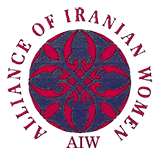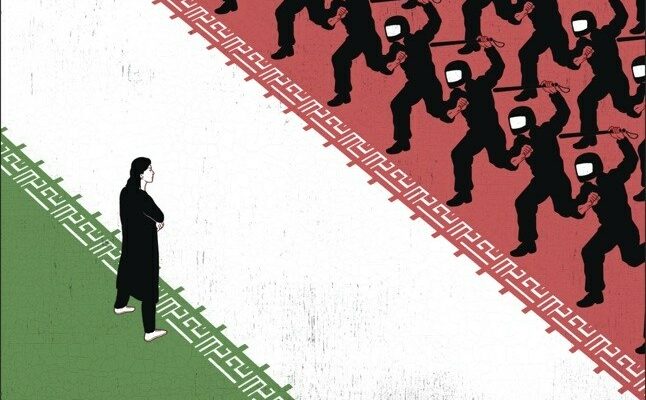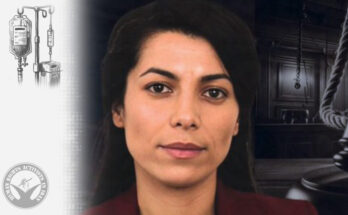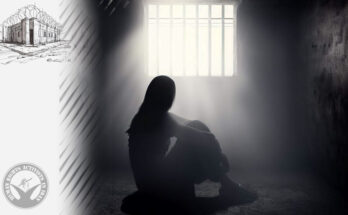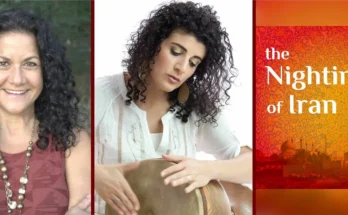What do the Iranian protests mean for the country’s women?
Source: The New Yorker
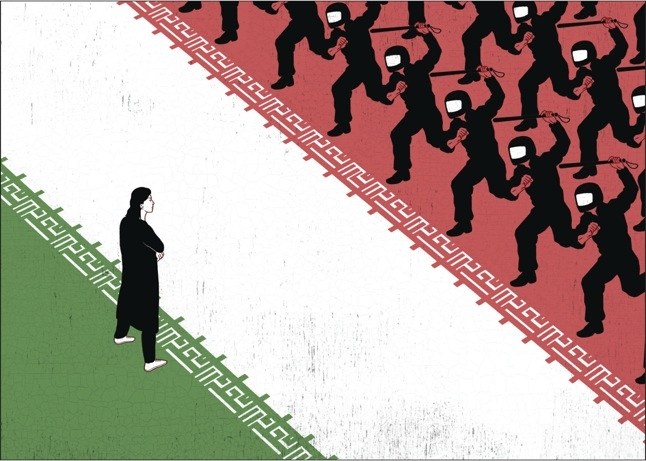
Letter from Tehran
The demonstration of August 5th was the first that Negin had attended on her own. She usually went with a friend or in a group. Lone women can be vulnerable, so she intended to stay in her car, driving around among the demonstrators, honking and flashing a furtive “V”-for-victory sign. (If the police or the Basij see you doing this, they may take down your license number, and you risk arrest later; or they might smash your windshield.) But then she had seen some big groups walking around, shouting slogans. Although the police were watching, the scene appeared calm, so she parked her car and joined one of the groups.
“We were walking up and down the street, shouting our slogans, and then suddenly the police ran toward us,” Negin said. “Everyone turned to flee, of course, but something came over me, and I couldn’t move. I just stood like a fool. The police were getting closer and closer, and I decided to stand there, up against the wall, and hope they would run past.” She smiled and shook her head.
“They ran past, but not without hitting me as they did—every single one of them, on my legs, on my back, everywhere. One stopped and hit me in the face and shouted at me, and he was a young man, and I remember thinking, This young man is hitting and insulting a woman he doesn’t know, who is old enough to be his mother! He must be crazy or something! I pushed him back and shouted, ‘What are you hitting me for!’ He hit me some more and then he ran off and I felt water running down my leg. I looked down and saw I was covered in blood.”
Negin asked a passing motorcyclist to give her a lift, and he took her into a side street where protesters were resting and hiding from the police. There, another man bound her leg, and she called her sister, a pharmacist, who drove over immediately to pick her up. Because it was well known that the security forces had officers in the hospitals who arrested anyone whose injuries were consistent with a truncheon blow, her sister phoned a doctor she knew and asked if she could bring Negin over.
The doctor examined Negin, ascertained that her leg wasn’t broken, and gave her painkillers. During the examination, a group of demonstrators had gathered in the street outside the doctor’s office, and Negin and her sister had to wait until the commotion had passed. Negin went on, “Luckily, I was in a good mood by then. Perhaps it was the painkillers. I was making everyone laugh. The doctor’s assistant said something about the dimples in my cheek, and I said, ‘I never had a dimple there! They must have hit me there with a truncheon!’ ”
That evening, Negin’s sister took her home and put her to bed. The doctor had instructed Negin to keep her leg up for several days. If it became infected, he warned, she would have to go to the hospital. That night, for the first time in her life, Negin took a sleeping pill. Whenever she closed her eyes, she saw the policeman shouting at her and then hitting her in the face.
A few weeks before Negin was hurt, I was invited to a dinner party. The other guests were mostly cultivated, middle-aged women engaged in business or the arts. Before the protests, we might have spent the evening talking about films and books and foreign travel, but the night was disturbed by the sound of people gathered on the rooftops of their apartment blocks, yelling “Allahu akbar! ”—a rallying cry from the Revolution which had been revived by the opposition. Thousands of people were thought to be behind bars, some of whom we knew. One had been in this house a few weeks earlier.
All of us were fearful that night, but we still hoped that the disturbances would force Ahmadinejad from office. In the course of the evening, we consumed a great deal of bootleg alcohol, and no senior member of the regime escaped the women’s lacerating wit. One of the guests, who runs a publishing house, asked permission to tell a “true filthy story,” which she was sure we would appreciate. She described a demonstration that she had taken part in a few days earlier. Two Basijis had attacked the group, using their truncheons and hitting one young man on the forehead. But the Basijis underestimated the size of the crowd and were forced to retreat as the protesters rushed toward them.
“As he was fleeing,” the woman said, “one of the Basijis dropped his walkie-talkie, and we heard the voice of his comrade, calling, ‘Isar! Isar! Do you read me? Isar?’ The young man who had been hit on the forehead, and who now had blood running down his face, poor thing, put the walkie-talkie to his mouth and shouted, ‘Listen here—I fucked Isar’s sister and his mother, and now I’ll fuck yours!’ ”
The guests exploded with laughter. They hated the Basijis as much as the Basijis hated them. Later, the party broke up and the woman who had told the story distributed spearmint gum to each of the guests—“just in case you get stopped on the way home and they sniff your breath for booze.”
A few days later, I went to visit a woman called Shahrzad, who lives with her son, Kaveh, in a large old apartment lined with books; she used to share the apartment with her late husband, an architect. In her youth, Shahrzad was renowned for her beauty. She is in her fifties now and has a laugh that is throaty and full of mischief. It was one of the hottest days of the year, and the apartment had a single, antiquated air-conditioning unit. She sat me down in front of it—“the only place that’s bearable in the whole place!”—and brought me sour-cherry sherbet.
Shahrzad is a translator. She told me that she had hardly done any work since the election. Her life had been taken over by the movement. On days when there was no demonstration, she spent her time surfing the opposition’s Web sites using anti-filter software—most Persian-language sites have been blocked by the authorities—and pasting notable articles and blogs into group e-mails. She added the request “Delete sender’s identity before forwarding,” because the authorities were known to monitor people’s communications. She showed me a cartoon that she was e-mailing to her list of contacts. It depicted a Basiji sniffing a man’s mouth and saying, “Let’s see if you give off a stench of Allahu akbar.”
Shahrzad told me that she had two daughters who were studying abroad. Their absence was a relief. “If they were here, they would be in the thick of the demonstrations, and I’d be ill with worry,” she said. Instead, Kaveh accompanied her to the demonstrations. He came home as we were talking, a slim, handsome young man, accompanied by his girlfriend. They immediately sat down at Kaveh’s laptop to find out when the next demonstration would be, and to find out about friends who had been detained. As they hunched over the screen, Shahrzad whispered to me, “I dread the day they arrest him. Even more than that, I dread to think what would happen if he suffered a fraction of what they’re doing to the other boys in jail.”
Like Negin, Shahrzad had joined the protests in 1978-79, and had been angry when it became clear that the Islamic Republic would discriminate against women. She and her husband remained in Tehran during the Iran-Iraq War. They were not tempted to move abroad, even in the mid-nineties, when several secular-minded writers and intellectuals were murdered by agents from the Intelligence Ministry. “We had seen Iranians living as exiles abroad,” Shahrzad said, “and it had made us sad.”
In Ahmadinejad’s first term, books, music albums, and scripts gathered dust at the Ministry of Culture and Islamic Guidance, before being rejected in their entirety or cut with broad, destructive strokes. Many in the artistic community sought a means of emigrating. Shortly before my visit, Shahrzad had received several sheets of suggested amendments to a reprint of a translation of hers that had been cleared for publication without censorship a decade before. This time, she had been told to cut the work by several pages. “What exactly has changed in ten years, that a book that was acceptable then should be unacceptable now?” she said.
It is possible that last summer’s protests have advanced the cause of women further than any formal movement could have. For the first time in Iran’s history, men and women in large numbers marched as equals. When, at Friday prayers on July 17th, thousands of men and women scandalized traditionalists by praying side by side, in the streets around Tehran University, Iran’s culture of separation gave way to one of solidarity.
Shahrzad told me about a woman who had become well known among the demonstrators for her interventions whenever she saw a Basiji beating a young man. “She doesn’t intervene in the normal way, which is to scream ‘Don’t hit him!’ and to try and physically restrain the Basiji,” Shahrzad said. “Instead, she strides over to the protester and admonishes him, ‘Fereydun! I told you not to come out today and make mischief! Come home immediately!’ Then she hustles him away from the startled Basiji.”
The story showed the ironies inherent in the involvement of Iranian women in a violent political movement. It appealed to Shahrzad that the woman in question had mischievously exploited the maternal role that society allotted her in order to save young men from a beating. Inside this movement of oppressed freedom-seekers, Shahrzad seemed to be saying, there was a second, less obtrusive movement, of women playing with their status.
She told me a similar story about a protest she had attended in July, shortly after the election. One afternoon, Shahrzad had come across a rally to mark Ahmadinejad’s official victory. It was a response to a much bigger demonstration, in support of Moussavi and Karroubi, a few miles to the north. Shahrzad found herself in a press of people, most of them women wearing chadors and holding Ahmadinejad posters. “I realized I was stuck,” she said.
“As we stood there waiting,” Shahrzad went on, “I heard a woman speaking in a loud, coarse voice behind me. She was mouthing off against Ahmadinejad’s opponents. She said, ‘They deserve to be killed like dogs! They want to be free and walk naked down the street. Where do they think they are? Europe? America?’ ”
Normally, Shahrzad would not have responded to this provocation, which was standard government propaganda. But she felt bruised and angry. “The people around me had come to celebrate a victory that I considered to be a theft, and there was a triumphalism in the woman’s voice that I couldn’t stand,” she said. “It suddenly occurred to me that she had sized me up as an opposition sympathizer and was addressing me. Suddenly, she said loudly, very near my ear, ‘Revolting uptown girl!’ ”
Shahrzad turned to confront her antagonist and saw that the woman was not dressed chastely, as she had expected. “She was stuffed into a tight coat that hugged the contours of her body, and she was made up to the nines! I immediately thought of the last regime, when court officials bribed mobs to come into the streets and demonstrate in favor of the Shah, and the mobs included prostitutes from the red-light district.”
There was no way of knowing whether the woman was a hired rabble-rouser, but her appearance, Shahrzad realized, presented an opportunity. In a stern, admonitory tone, Shahrzad asked, “Why are you wearing so much eyeliner? Weren’t you ever told you should only wear makeup for your husband?”
The woman, taken aback, replied that she didn’t have a husband but then realized that this was the wrong thing to say in front of the Ahmadinejad women, so she started attacking former President Mohammad Khatami. “It’s all his fault!” she exclaimed. “He allowed moral corruption to grow and encouraged women to wear makeup. He’s to blame!”
Shahrzad was enjoying herself now. Several conservatively dressed women had gathered and were following the argument with interest. Shahrzad retorted, “You blame Khatami for the fact that you’re wearing eyeliner? Khatami has been out of power for the past four years! Didn’t you find the time to wash off your eyeliner?” Shahrzad’s gaze fell on the woman’s coat. “And why are you wearing such tight clothes?”
In this way, Shahrzad exacted her revenge. Soon, the Ahmadinejad supporters were agreeing that the woman was inappropriately dressed. One of them said, “Someone might think that you were a woman of ill repute.”
“I’m clean!” the woman wailed. “I’m clean!” But the other woman muttered, “The shopkeeper never admits his curds are off,” and everyone laughed. The object of their derision, defeated, swore at Shahrzad, before forcing her way through the crowd and slinking away.
When Shahrzad finished her story, she and I were smiling, but Kaveh was looking hard at the dregs of his coffee. Shahrzad rested her hand on his and explained, “Kaveh doesn’t like this story. He doesn’t like that I humiliated this woman using arguments I don’t believe in.”
At the end of the summer, as the weather was starting to cool, Negin dropped by to see me. Her cheek was healed. She was walking without a limp and looked rested. She described a dream that she had had a few days before.
“I was sitting in the mountains and looking at two peaks in front of me,” she said. “It was a placid scene. Suddenly, the peaks began to tremble, and rocks and snow fell off and landed nearby. The trembling grew more intense and then the mountains split in two and collapsed, and there was a great cloud of dust in the sky. When the dust settled, I could see beyond the ruins of the mountains. There, on the plain, very small and far away, I saw different types of military equipment—jeeps and tanks and rocket launchers on wheels, being driven around.”
Negin had asked several friends what they thought her dream meant. They had all said that the collapse of the mountains represented the collapse of the Islamic Republic’s claims to divine legitimacy. The plain full of tanks and guns represented the militarization of society, the victory of the Revolutionary Guard and the Basij.
As soon as her wounds healed, Negin spent a week at her parents’ place, where she learned that her uncle, the Revolutionary Guard officer, had been involved in the movement’s suppression. This uncle had been part of a team that seized a large group of protesters and took them to a place where they were beaten to a pulp. Negin’s Basij cousins had also been out that day, cracking heads.
“What about your mother?” I asked. “Does she still love Khamenei?” Negin shook her head and said, “Whenever she sees him on television, she turns away and says, ‘Enough of the lies. Enough!’ ”
Negin’s return to the capital had coincided with the end of the demonstrations. Ahmadinejad was trying to persuade parliament to support his nominees for cabinet positions; it was almost as if politics had returned to normal. The movement seemed dormant; what if it never came to life again? I knew lots of people who were apprehensive that the suffering would turn out to be worthless.
Reports of torture undoubtedly contributed to a decline in street protests at the end of the summer. The fasting month of Ramadan was another factor; people felt listless and tired. But it was clear that people had lost a lot of their old fear. Indeed, many thousands of opposition supporters succeeded in subverting Jerusalem Day—an official protest against Israel and its actions in Gaza and Lebanon, which falls at the end of Ramadan—and turning it into a demonstration against the regime. If a new round of demonstrations occurs in the coming weeks, they may be more violent. The protesters will know what is in store for them if they are arrested.
As Iran enters a new phase of uncertainty, and international powers wrangle over its nuclear program, Iranians are keenly aware that their country has changed. Not so long ago, assertive, politically aware women were an isolated minority. This is no longer true. Even traditional people like Negin’s mother are revising their loyalties. And the middle tier of Iranian society has become urgently politicized—activists whose goal, an end to tyranny, is now clear. Half of that tier is women.
Negin and Shahrzad were among the Jerusalem Day demonstrators. “Not for Gaza and not for Lebanon!” they shouted. “I will give up my life for Iran.” ♦
